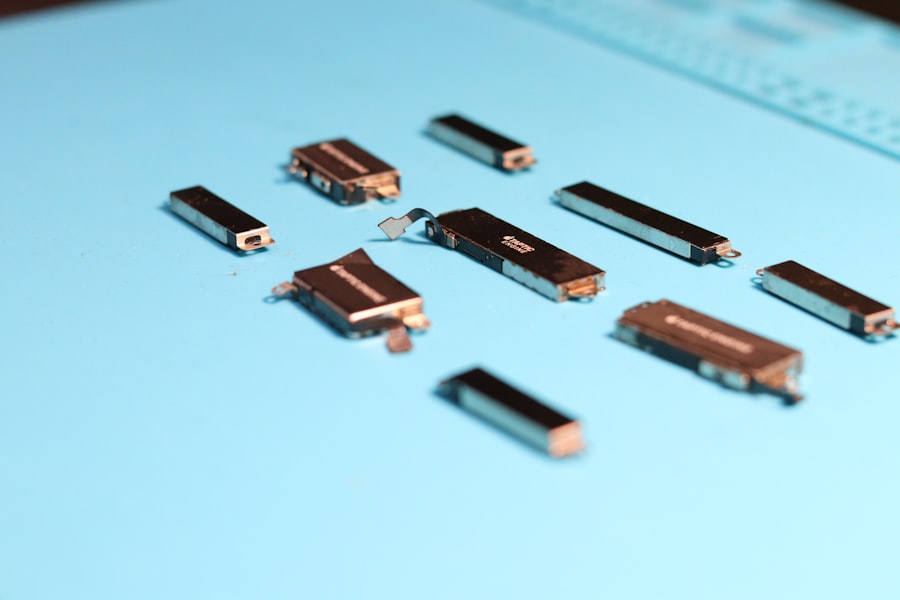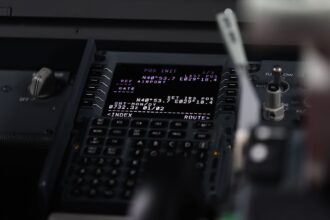The KGB, or the Committee for State Security, was the primary security agency for the Soviet Union from its establishment in 1954 until its dissolution in 1991. Renowned for its clandestine operations, the KGB employed a variety of espionage tactics that were both sophisticated and ruthless. Its methods ranged from traditional spying, such as human intelligence (HUMINT) gathering, to more advanced techniques involving technology and psychological manipulation.
The agency’s overarching goal was to gather intelligence that could be used to undermine Western powers and bolster the Soviet Union’s position on the global stage. One of the KGB’s most notable tactics was its ability to blend in with various social and professional environments. Agents were often trained to adopt local customs and languages, allowing them to infiltrate organizations and gain access to sensitive information.
This adaptability was crucial in a world where technological advancements were rapidly changing the landscape of espionage. The KGB also utilized a network of informants and double agents, creating a web of deception that made it difficult for Western intelligence agencies to detect their operations. The combination of these tactics allowed the KGB to execute complex missions that had far-reaching implications for international relations.
Key Takeaways
- The KGB used covert operations and double agents to steal microchip technology from Western companies.
- The development of microchip technology was a target for Soviet spies due to its potential impact on Western technology.
- The KGB infiltrated Western companies to steal microchip technology, using smuggling techniques to get the stolen goods out of the country.
- The impact of the KGB’s microchip heist affected Western technology and led to legal and political ramifications.
- The KGB’s operation changed the way Western companies protect their technology, impacting modern cybersecurity and espionage.
The Development of Microchip Technology: A Target for Soviet Spies
As the late 20th century approached, microchip technology emerged as a cornerstone of modern electronics, revolutionizing industries from telecommunications to computing. The rapid advancement of this technology not only transformed everyday life but also became a focal point for military and strategic applications. Recognizing the potential of microchips to enhance weaponry and intelligence systems, the Soviet Union prioritized the acquisition of this technology as part of its broader strategy to compete with the West.
The significance of microchip technology was not lost on the KGB, which viewed it as a critical asset in the ongoing Cold War. The agency understood that possessing advanced microchip designs could provide the Soviet military with a significant advantage over NATO forces. Consequently, the KGB launched a series of operations aimed at infiltrating Western companies involved in microchip research and development.
This focus on microchips reflected a broader understanding within the KGB that technological superiority was essential for national security and global influence.
The KGB’s Covert Operation: Planning and Execution

The planning and execution of KGB operations were characterized by meticulous attention to detail and a high degree of secrecy. Each mission was carefully crafted, often involving extensive reconnaissance and intelligence gathering before any action was taken. The KGB employed a range of specialists, including engineers, linguists, and psychologists, to ensure that every aspect of an operation was executed flawlessly.
This level of preparation allowed the agency to adapt to unforeseen challenges and maintain operational security. Once a target was identified, the KGB would develop a comprehensive strategy that included identifying key personnel within the organization, assessing security measures, and determining the best approach for infiltration. This could involve creating false identities or leveraging existing relationships within the company.
The execution phase required agents to remain calm under pressure, as they navigated complex environments filled with potential risks. The KGB’s ability to execute these operations with precision contributed significantly to its reputation as one of the most effective espionage organizations in history.
Infiltrating Western Companies: The KGB’s Approach to Stealing Microchip Technology
| Company | Microchip Technology Stolen | Method of Infiltration |
|---|---|---|
| Intel | Microprocessor designs | Recruitment of employees |
| AMD | Microprocessor designs | Compromising supply chain |
| IBM | Microprocessor designs | Industrial espionage |
Infiltration was a cornerstone of the KGB’s strategy for acquiring microchip technology from Western companies. Agents often posed as employees or contractors within these organizations, allowing them to gain access to sensitive information and proprietary designs. This approach not only provided direct access to technological advancements but also facilitated the establishment of relationships with key personnel who could be manipulated or coerced into providing further information.
The KGB also employed various tactics to exploit weaknesses within corporate structures. For instance, they would often target companies that were experiencing financial difficulties or internal strife, as these situations made employees more susceptible to bribery or coercion. Additionally, the agency utilized social engineering techniques to gather intelligence through casual conversations or seemingly innocuous interactions.
By creating an environment of trust, KGB operatives could extract valuable information without raising suspicion.
The Role of Double Agents: How the KGB Used Spies to Obtain Microchip Technology
Double agents played a pivotal role in the KGB’s efforts to obtain microchip technology from Western companies. These individuals, who operated under the guise of loyalty to one side while secretly working for another, provided invaluable insights into corporate strategies and technological advancements. The KGB actively sought out potential double agents within organizations, often targeting those who were disillusioned or dissatisfied with their current circumstances.
Once recruited, double agents were tasked with gathering intelligence on specific projects or technologies that were deemed critical by the KGThey would relay information back to their handlers, who would then analyze it for potential exploitation.
Nevertheless, their contributions significantly enhanced the KGB’s ability to stay ahead in the technological arms race during the Cold War.
The KGB’s Smuggling Techniques: Getting Stolen Microchips Out of the Country

Once microchip technology had been successfully acquired, the next challenge for the KGB was smuggling these valuable assets out of Western countries. The agency employed a variety of techniques to ensure that stolen microchips could be transported without detection. This often involved using couriers who were trained in evasion tactics and familiar with border security protocols.
The KGB also utilized sophisticated methods for concealing stolen technology within legitimate shipments or personal belongings. For example, microchips could be hidden within everyday items or disguised as innocuous electronic components. Additionally, agents would often exploit gaps in customs regulations or take advantage of diplomatic immunity when transporting sensitive materials.
These smuggling techniques were crucial for ensuring that acquired technology reached Soviet hands without alerting Western authorities.
The Impact of the KGB’s Microchip Heist: How It Affected Western Technology
The KGB’s successful acquisition of microchip technology had profound implications for Western technological development and national security. By obtaining advanced designs and manufacturing processes, the Soviet Union was able to enhance its own capabilities in various fields, including military applications and consumer electronics. This not only narrowed the technological gap between East and West but also raised concerns about espionage and intellectual property theft among Western nations.
In response to these threats, many Western companies began reevaluating their security protocols and investing in more robust measures to protect their intellectual property. This included implementing stricter access controls, conducting background checks on employees, and enhancing cybersecurity measures to prevent unauthorized access to sensitive information. The impact of the KGB’s operations served as a wake-up call for many organizations, highlighting the need for vigilance in an increasingly interconnected world.
Uncovering the KGB’s Operation: How Western Intelligence Agencies Discovered the Heist
The discovery of the KGB’s microchip heist was not an isolated event but rather a culmination of various intelligence efforts by Western agencies. Over time, patterns began to emerge that indicated a coordinated effort by Soviet spies to infiltrate key industries. Intelligence agencies such as the CIA and FBI started sharing information about suspicious activities within technology firms, leading to increased scrutiny of potential espionage operations.
As investigations progressed, Western intelligence agencies began piecing together evidence that pointed toward a systematic approach by the KGB in targeting microchip technology. This included monitoring communications between suspected agents and analyzing financial transactions that suggested illicit activities. Ultimately, these efforts led to several high-profile arrests and increased awareness about the extent of Soviet espionage activities in the West.
The Aftermath of the KGB’s Microchip Heist: Legal and Political Ramifications
The aftermath of the KGB’s microchip heist had significant legal and political ramifications for both Western nations and the Soviet Union. In response to growing concerns about espionage, many countries enacted stricter laws regarding industrial espionage and intellectual property theft. This included harsher penalties for those found guilty of stealing trade secrets or collaborating with foreign intelligence agencies.
Politically, revelations about Soviet espionage activities strained relations between East and West even further during an already tense period in history. Governments began taking a more aggressive stance against perceived threats from foreign powers, leading to increased funding for intelligence operations and counter-espionage initiatives. The fallout from these events underscored the importance of safeguarding national interests in an era marked by rapid technological advancement.
Lessons Learned: How the KGB’s Operation Changed the Way Western Companies Protect Their Technology
The lessons learned from the KGB’s microchip heist prompted significant changes in how Western companies approached technology protection. Organizations began adopting more comprehensive security measures that encompassed not only physical security but also cybersecurity protocols designed to thwart digital intrusions. This shift reflected an understanding that threats could come from multiple angles—both human and technological.
Moreover, companies started fostering a culture of awareness among employees regarding potential espionage threats. Training programs were implemented to educate staff about recognizing suspicious behavior and reporting it promptly. By creating an environment where employees felt empowered to act against potential threats, organizations aimed to mitigate risks associated with industrial espionage effectively.
The Legacy of the KGB’s Microchip Heist: Its Impact on Modern Cybersecurity and Espionage
The legacy of the KGB’s microchip heist continues to resonate in today’s landscape of cybersecurity and espionage. As technology has evolved, so too have the methods employed by state-sponsored actors seeking to gain an advantage over their rivals. The lessons learned from past operations have informed contemporary approaches to safeguarding sensitive information in an increasingly digital world.
Modern cybersecurity strategies often draw upon historical insights into espionage tactics, emphasizing proactive measures such as threat intelligence sharing and collaboration between private companies and government agencies. Additionally, as cyber threats become more sophisticated, organizations are investing heavily in advanced technologies designed to detect and respond to potential breaches swiftly. Ultimately, the legacy of the KGB’s operations serves as a reminder that vigilance is essential in protecting national interests against ever-evolving threats in an interconnected global landscape.
In the intricate world of espionage and technological theft, the KGB’s audacious operations to steal microchips stand out as a testament to Cold War-era cunning and innovation. For those interested in delving deeper into the shadowy tactics employed by the KGB, a related article can be found on the War Room website. This piece provides an in-depth analysis of the methods used by the KGB to infiltrate Western technology firms and acquire critical microchip technology, which was pivotal in advancing Soviet technological capabilities during the Cold War. To explore this fascinating topic further, you can read the article by following this link.
WATCH THIS 🤯How the KGB Stole America’s Future
FAQs
What is the KGB?
The KGB, or Komitet Gosudarstvennoy Bezopasnosti, was the main security agency for the Soviet Union from 1954 until its dissolution in 1991. It was responsible for intelligence, counterintelligence, and internal security.
What are microchips?
Microchips are small electronic devices made of semiconductor material that are used in various electronic devices to perform specific functions. They are commonly used in computers, smartphones, and other electronic devices.
How did the KGB steal microchips?
The KGB used various methods to steal microchips, including espionage, bribery, and infiltration of companies involved in microchip production. They also targeted individuals with access to sensitive information about microchip technology.
What was the purpose of stealing microchips?
The KGB stole microchips to gain access to advanced technology and to use it for military and intelligence purposes. Microchips were used in a wide range of electronic devices, including military equipment and communication systems, making them valuable targets for espionage.
What were the consequences of the KGB stealing microchips?
The theft of microchips by the KGB had significant implications for national security and technological competitiveness. It allowed the Soviet Union to gain access to advanced technology and potentially use it for military and intelligence purposes, posing a threat to Western countries. Additionally, it raised concerns about the security of sensitive technology and the need for improved counterintelligence measures.




